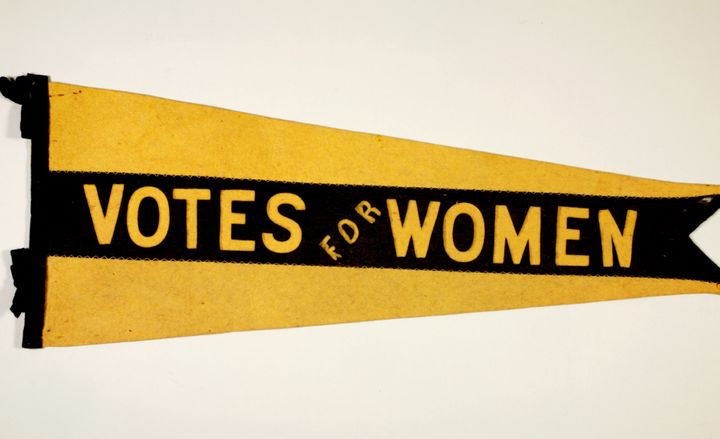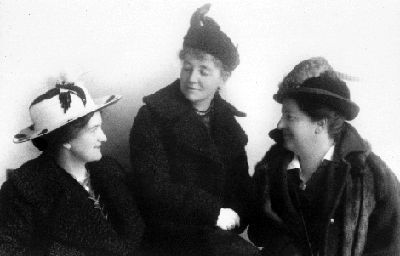Women's Suffrage in Atlantic Canada

-
January 01, 1836
Prince Edward Island
Prince Edward Island Disenfranchises Women
The Prince Edward Island Legislature excluded women from the franchise. For a time, there were regions in British North America where some women could vote; however, just as in Prince Edward Island, statutes were passed to disqualify women in places such as the Province of Canada and Nova Scotia.
-
January 01, 1843
New Brunswick
New Brunswick Women Disenfranchised
Officials in New Brunswick passed a law restricting the right to vote to men. Previously, the province’s 1795 electoral legislation had allowed “persons” meeting certain qualifications to vote. There is evidence that some women voted in New Brunswick prior to the 1843 legislation.
-
April 07, 1851
Nova Scotia
Nova Scotia Women Disenfranchised
The Franchise Act disenfranchised women by adding the word male to voting requirements. There had been no specific restrictions on women’s right to vote since Nova Scotia had been granted a General Assembly in 1758.
-
January 01, 1884
Nova Scotia
Municipal Vote Attempted for NS Unmarried Women
An attempt to secure the municipal vote for widowed and unmarried women property holders failed. The legislation included the possibility of serving on school boards. When the vote came to a tie, the speaker broke it in favour of the anti-franchisers. Another attempt to get the municipal vote was passed in 1887, though school board service was revoked.
-
January 01, 1886
New Brunswick
Unmarried Women Gain Municipal Franchise in New Brunswick
After receiving several petitions from town and city councils and small groups of women, the New Brunswick legislature passed a bill that granted the municipal franchise to unmarried women who met the property requirements applied to men.
-
March 18, 1891
Newfoundland and Labrador
Newfoundland WCTU Presents Suffrage Petition
Some 50 members of the Woman’s Christian Temperance Union presented petitions at the St. John’s Colonial Building. The signatures, requesting the municipal franchise, had been collected across the island. The petitions were met with scorn. Though the House of Assembly held two debates, the measure was defeated each time.
-
April 04, 1894
New Brunswick
New Brunswick Women’s Enfranchisement Association Founded
The New Brunswick Women’s Enfranchisement Association was established in Saint John. It emerged from a small society seeking to become a branch of the Dominion Women’s Enfranchisement Association. Wanting to form connections outside the region, the WEA voted to send a member to the National Council of Women convention in Ottawa.
-
February 27, 1895
New Brunswick
Saint John Telegraph Publishes Pro-Suffrage Editorial
In response to over a dozen petitions delivered to the legislature in support of an enfranchisement bill (which ultimately failed to pass), the Saint John Telegraph published a substantial editorial. The piece applauded the suffragists’ attempt and excoriated government officials, saying the opposing arguments were “denominated as twaddle.”
-
March 01, 1895
Nova Scotia
Halifax Suffrage Association Established
The Halifax Suffrage Association (HSA) was established with Anna Leonowens, an author and feminist, as its first president. Leonowens would become one the region’s most visible leaders in the women’s rights movement. The HSA leadership included Eliza Ritchie, who was Nova Scotia’s first female professor, and community leader Charlotte McNeill.
-
January 01, 1896
New Brunswick
Saint John Hosts Association for the Advancement of Women Convention
The Association for the Advancement of Women, an American women’s rights organization, held its convention in Saint John. In an ironic twist, noted American suffragist Julia Ward Howe stayed at the home of NB Chief Justice William Tuck, who didn’t believe women should be permitted in the public sphere.
-
December 01, 1909
Newfoundland and Labrador
St. John’s Ladies’ Reading Room Formed
The Ladies’ Reading Room and Current Events Club was established. Members had been banned from attending not only lectures at the local men’s club, but its suffrage debates. The Ladies’ Club drew women from all classes, politicizing them by providing information about the suffrage movement via international newspapers and journals.
-
January 15, 1912
New Brunswick
Women’s Equality Association Hosts Sylvia Pankhurst
The New Brunswick Women’s Equality Association hosted a public talk by famous British suffragette Sylvia Pankhurst at the Saint John Opera House. Pankhurst spoke of the power of strategic militancy. Local suffragist and social reformer Emma Skinner, a leading voice for the Women’s Enfranchisement Association, shared the stage with Pankhurst.
-
January 31, 1918
Nova Scotia
First Annual Meeting of NS Equal Franchise League
The Nova Scotia Equal Franchise League held its first, and last, annual meeting. Both women and men joined the league, which provided information for any group interested. The Halifax Explosion of December 1917 so impacted its membership that the League decided its resources were better used in aiding the victims.
-
April 26, 1918
Nova Scotia
Nova Scotia Women Get Vote
Nova Scotia women won the rights to vote and to hold provincial office.
-
April 17, 1919
New Brunswick
New Brunswick Women Get Vote
New Brunswick women won the right to vote but not to hold provincial office.
-
May 20, 1920
Newfoundland and Labrador
Newfoundland Petition Calls for General Franchise
Newfoundland suffragists delivered a petition requesting the general franchise for women to the island’s legislature. The petition had 1,700 signatures, and a bill was introduced to move forward on its demand. Later in the year the Liberal government, under Sir Richard Squires, rejected the bill by way of a party vote.
-
May 03, 1922
Prince Edward Island
PEI Women Get Vote
Prince Edward Island women won the rights to vote and to hold provincial office.
-
April 03, 1925
Newfoundland and Labrador
Newfoundland and Labrador Women Get Vote
Women over 25 years of age gained the right to vote and to stand for political office in Newfoundland and Labrador.
-
May 17, 1930
Newfoundland and Labrador
First Woman Elected to the NL House of Assembly
Helena Squires became the first woman elected to the Newfoundland and Labrador House of Assembly.
-
March 09, 1934

New Brunswick
NB Women Gain Right to Hold Office
New Brunswick women won the right to hold provincial office.
-
June 07, 1960
Nova Scotia
First Woman Elected to the Nova Scotia Legislature
Gladys Porter became the first woman elected to the Nova Scotia legislature.
-
January 01, 1963
New Brunswick
First Nations Gain Right to Vote in New Brunswick
Status Indians in New Brunswick were granted the right to vote in provincial elections.
-
October 23, 1967
New Brunswick
First Woman Elected to the New Brunswick Legislature
Brenda Robertson became the first woman elected to the New Brunswick legislature.
-
May 11, 1970
Prince Edward Island
First Woman Elected to the PEI Legislature
Jean Canfield became the first woman elected to the Prince Edward Island legislature.
-
March 29, 1993

Prince Edward Island
First Woman Elected Premier of a Province
Catherine Callbeck was the first woman to be elected premier when she won the election in Prince Edward Island.
-
December 03, 2010
Newfoundland and Labrador
First Female Premier of NL
Following the retirement of Premier Danny Williams, Kathy Dunderdale was appointed interim leader of the Progressive Conservative Party and became Newfoundland and Labrador’s first female premier.
